Stralsund’s rich history as a thriving Hanseatic city can be seen in many places in the beautiful Old North German town, where merchant buildings are located in the streets between the three large churches and other public buildings erected as symbols of the city’s ability and wealth during the Middle Ages.
The many small streets are evocative as of a bygone era, and one quickly discovers why the city center is on UNESCO’s list of world heritage sites. As you approach Stralsund, you immediately see the city’s great medieval churches; St. Nikolai, St. Marien and St. Nikolai. They are all sights and worth a visit, and in the streets around them it is just about exploring.
The town squares are nice too. Best known is the Alter Markt, where you will also find Stralsund’s most famous building; Rathaus. The town hall stands almost as a manifestation of the city’s historical wealth.
There is water all around the town of Stralsund, and the wetlands are spread on the strait towards the Baltic Sea and the remains of the city’s old fortifications. The waterfront areas are very vibrant places where there are often larger events. You can also get closer to the maritime by visiting one of the prestigious museums in the form of the Deutsches Meeresmuseum and the modern aquarium Ozeaneum.
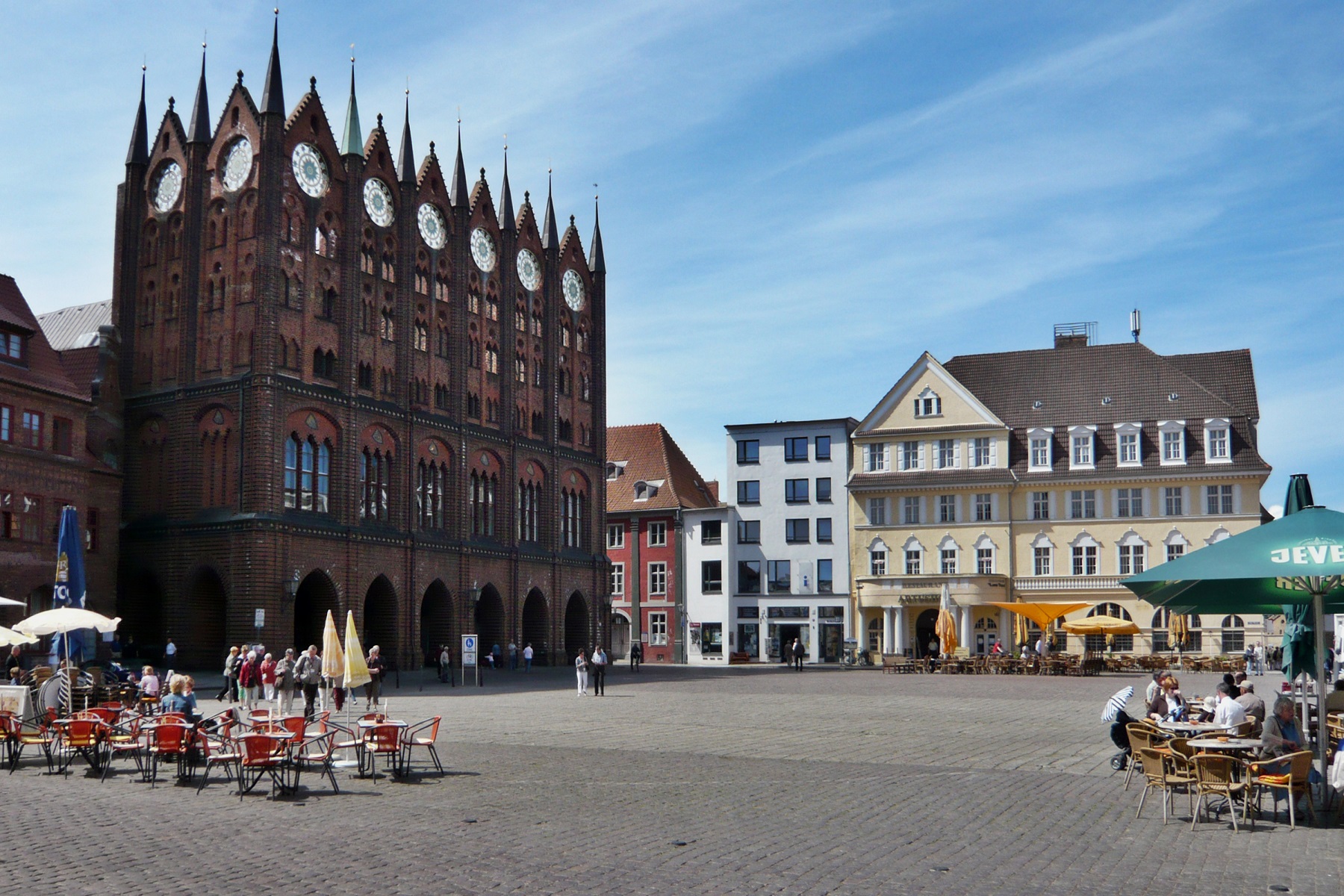
Stralsund’s city hall building was constructed in typical North German brick gothic with countless fine details in both the interior and exterior decoration. The construction of the City Hall began around 1250, and it is still one of the landmarks of the city.
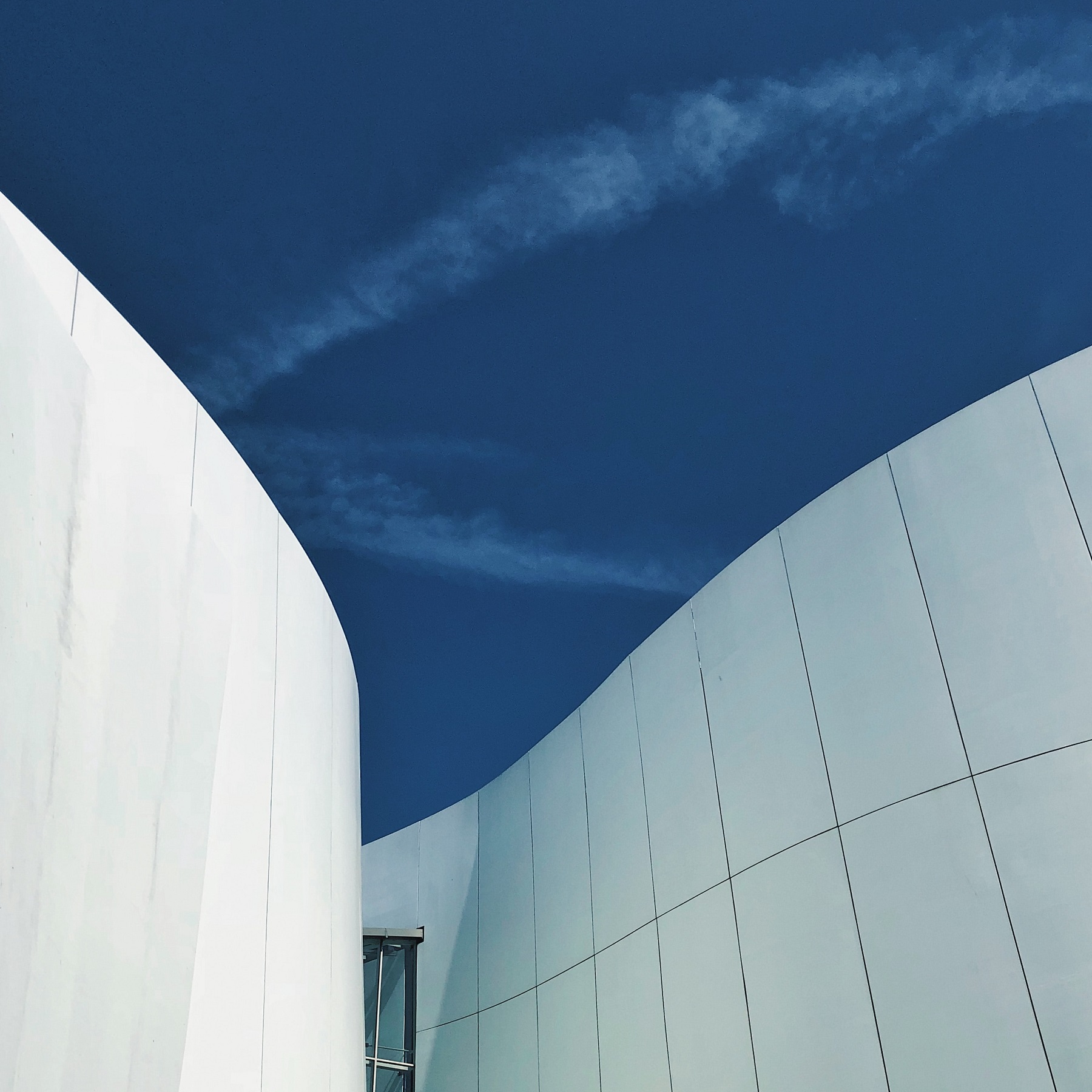
Ozeaneum opened in July 2008 as one of Germany’s largest aquariums with animals from the Baltic Sea, the North Sea and the Atlantic Ocean. There is a lot to see and do in the modern aquarium loacted at the harbor side. The aquarium’s modern architecture is interesting and a nice contrast to the old town.
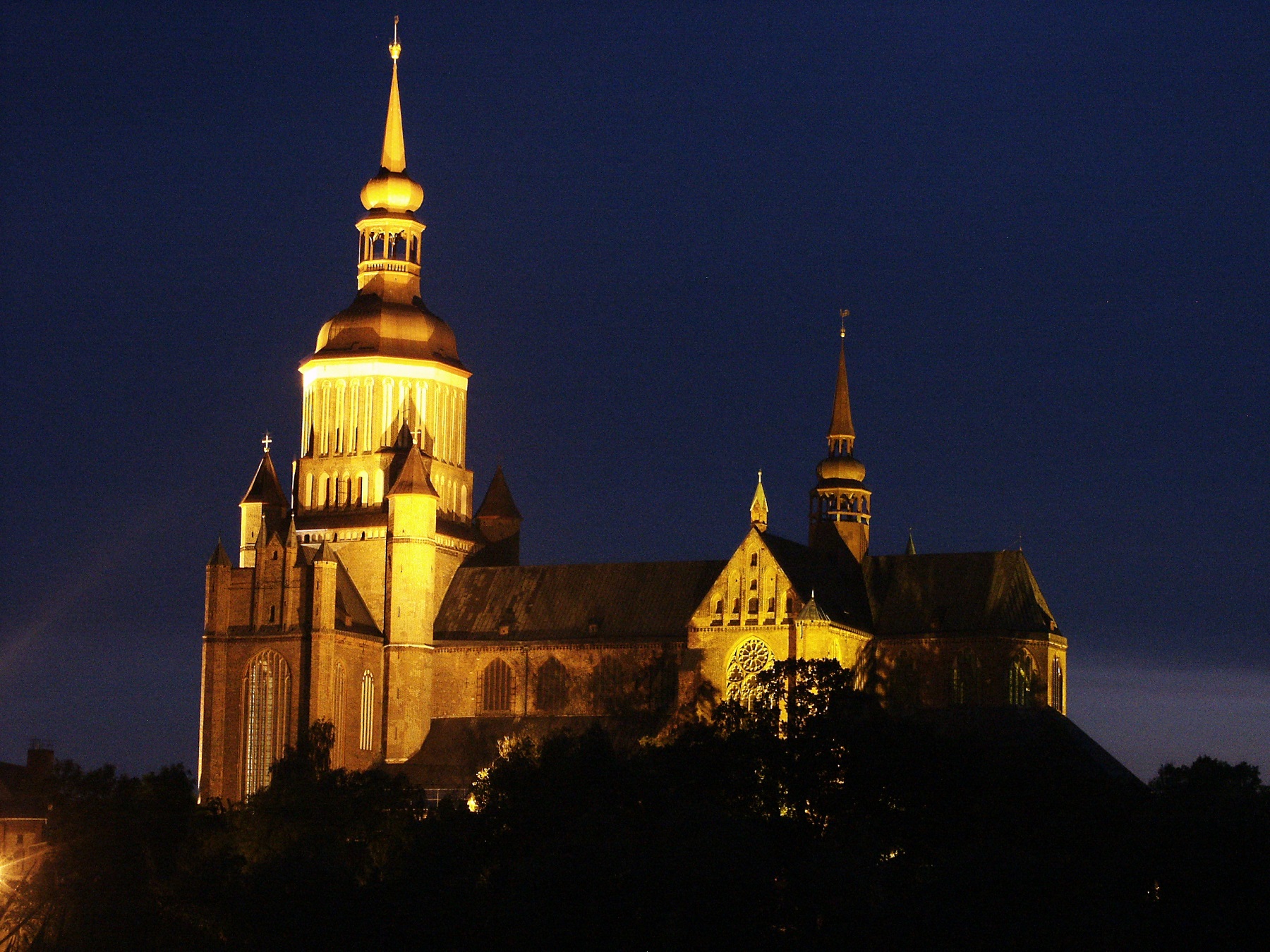
St Mary’s Church is probably the most significant profile in Stralsund’s skyline. The church was opened in 1298 as the largest of the city’s parish churches, and the style is Northern Germany’s famous brick gothic. The Marienkirche had a 151 meter/495 foot tower, which from 1549 to 1647 made it the tallest building in the world; except the years 1569-1573. The tower burned down in 1647, and subsequently the current baroque tower was built.
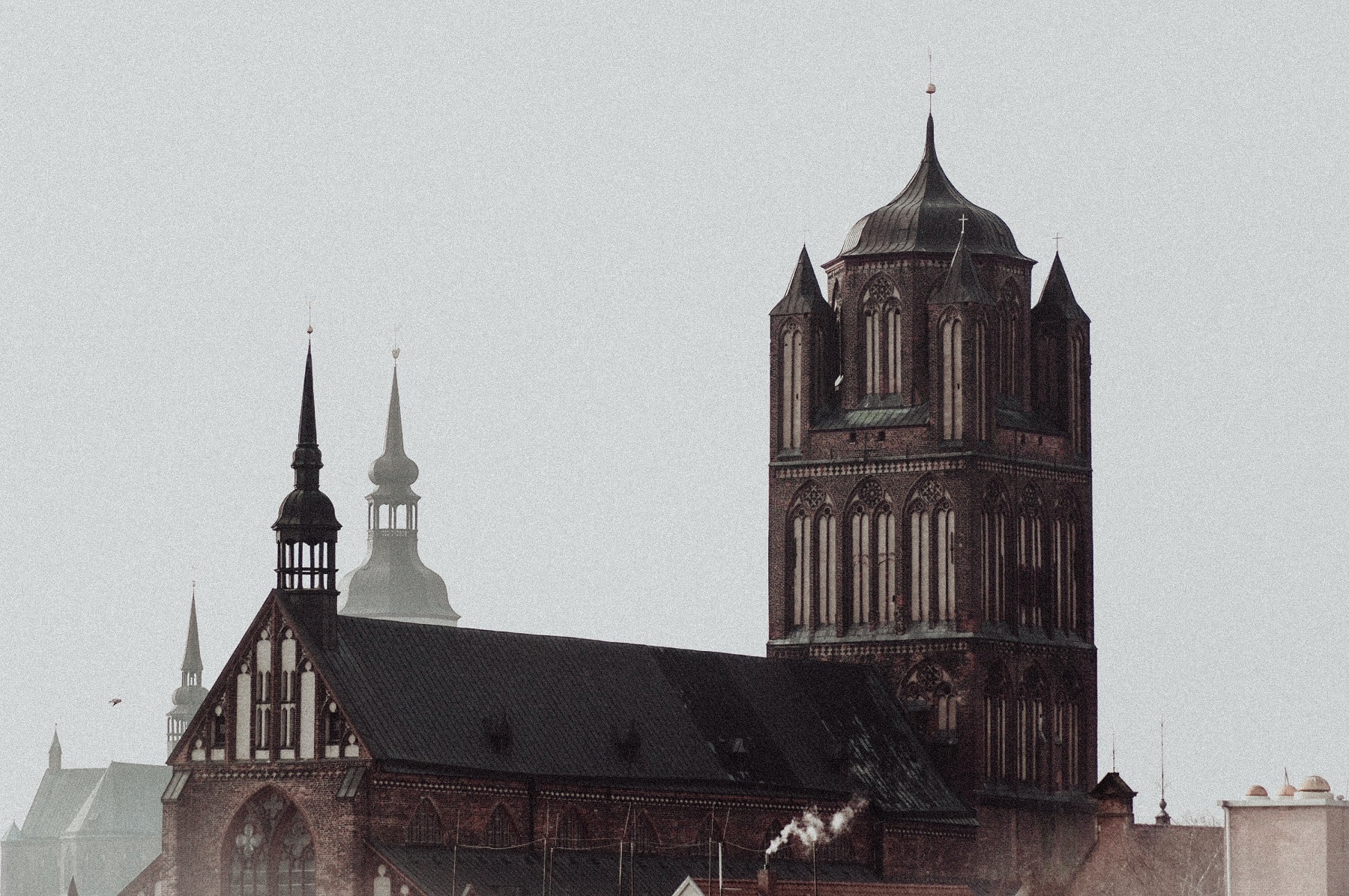
St. Jacob’s Church was consecreated in 1303 as the third of the centrally located large church buildings in Stralsund. Throughout the 1300s, it was expanded over several times, including with the construction of a tower. Throughout the GDR era, St. Jacob’s Church was used as a warehouse, and today it is a cultural church with many different events taking place.
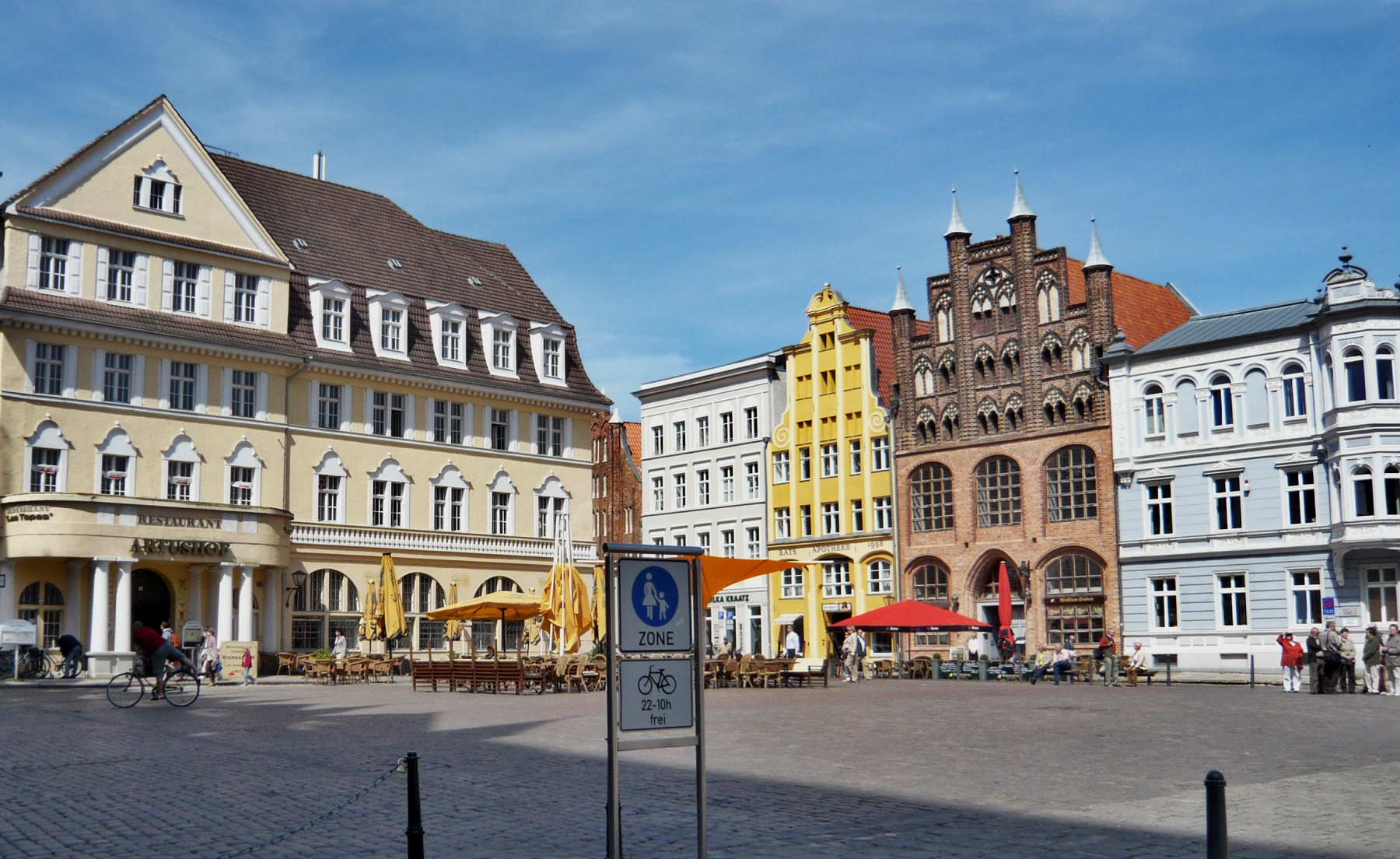
Alter Markt is Stralsund’s old market square, and it has been the city’s most important square for centuries. From here the city was ruled, and the first of Stralsund’s large churches was constructed here as the religious center. Today there is a nice atmosphere in the square, where you can see the building Commandantenhaus, which the Swedes built 1748-1751 for their local commander.
St Nicholas is the oldest of Stralsund’s three large, old parish churches. It was consecreated in 1276 and dedicated to Saint Nicholas, the patron saint of sailors who have always been an important one of the city’s development. The two towers of the church were destroyed in 1662, and in 1667 the south tower got a baroque top, while the north tower was left without reconstruction.
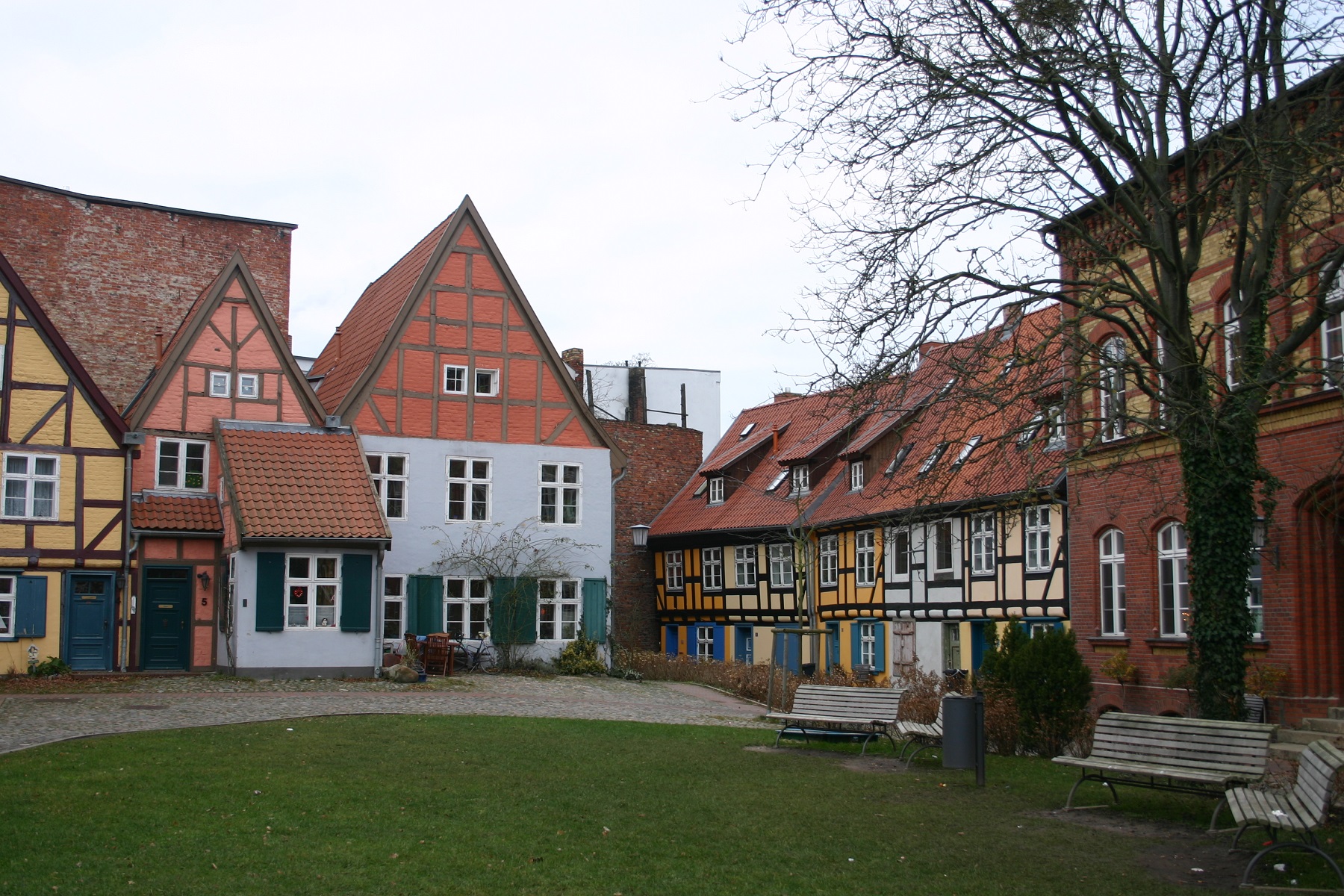
St. John’s Monastery was founded in 1254 by the Franciscans. It was one of the largest Franciscan monastic buildings along the southern Baltic coast. Today, the place stands as a ruin with worth seeing houses in the courtyard of the monastery.
Like many other cities in the Middle Ages, Stralsund has been surrounded by a defensive wall. It measured 3.1 km/1.9 mile and consisted of stone walls and 30 towers from the 1300s. The city’s defenses were later expanded by both Swedes and French during the Napoleonic era. The city wall was demolished in the latter half of the 19th century, but can still be seen in some places in the streets.
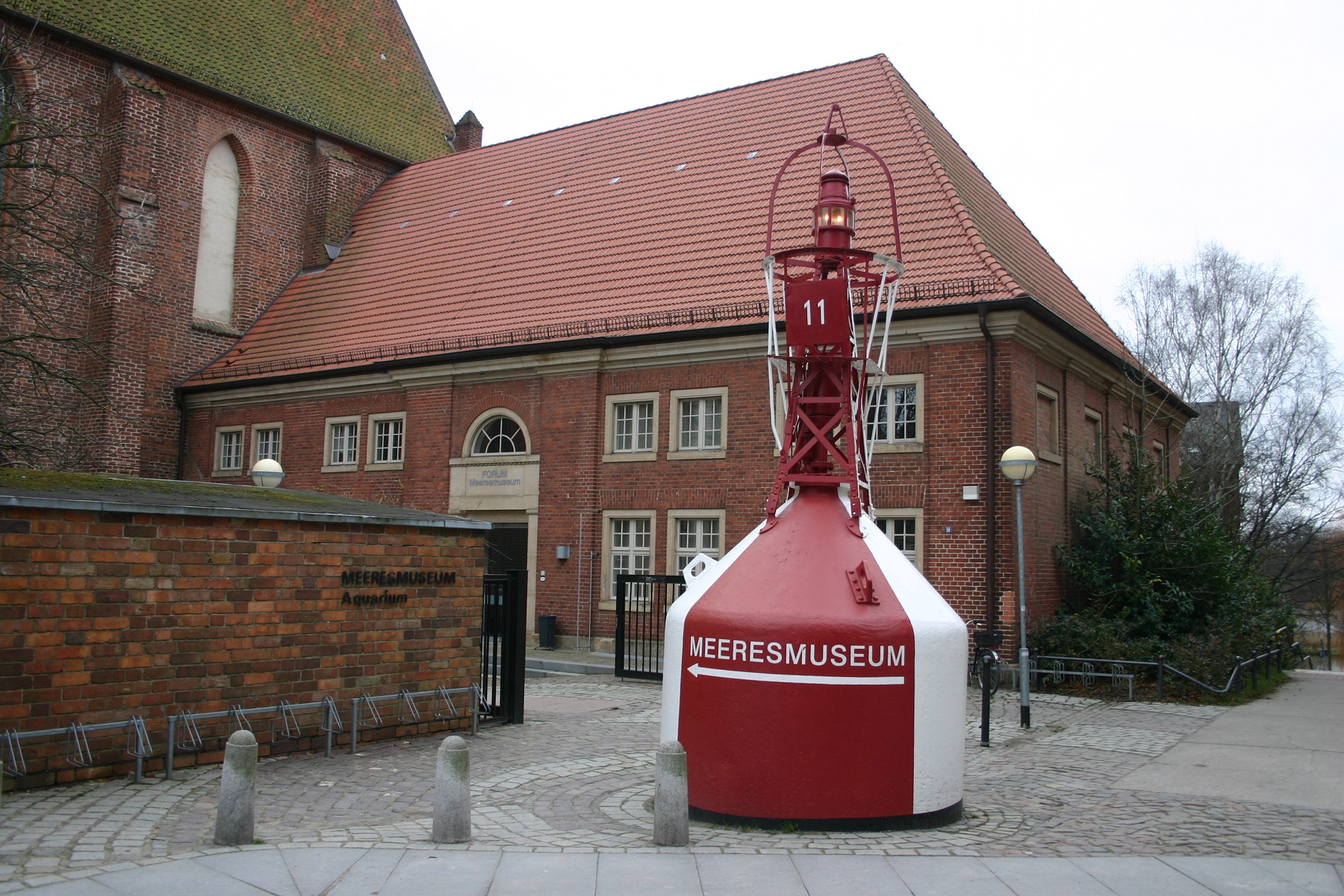
At the German Museum of the Seas you can experience many aspects of the world’s marine areas; eg marine biology, research fishing and environmental and protection efforts. It is one of Northern Germany’s largest science museums with interesting exhibitions.
The Museum House is part of the city’s cultural history museum, Kulturhistorisches Museum Stralsund. The house dates from the town’s flourishing period in the 1300s and was built in late Gothic style. The house’s museum is like a time travel through the house’s over 600-year history and with events that have happened through times.
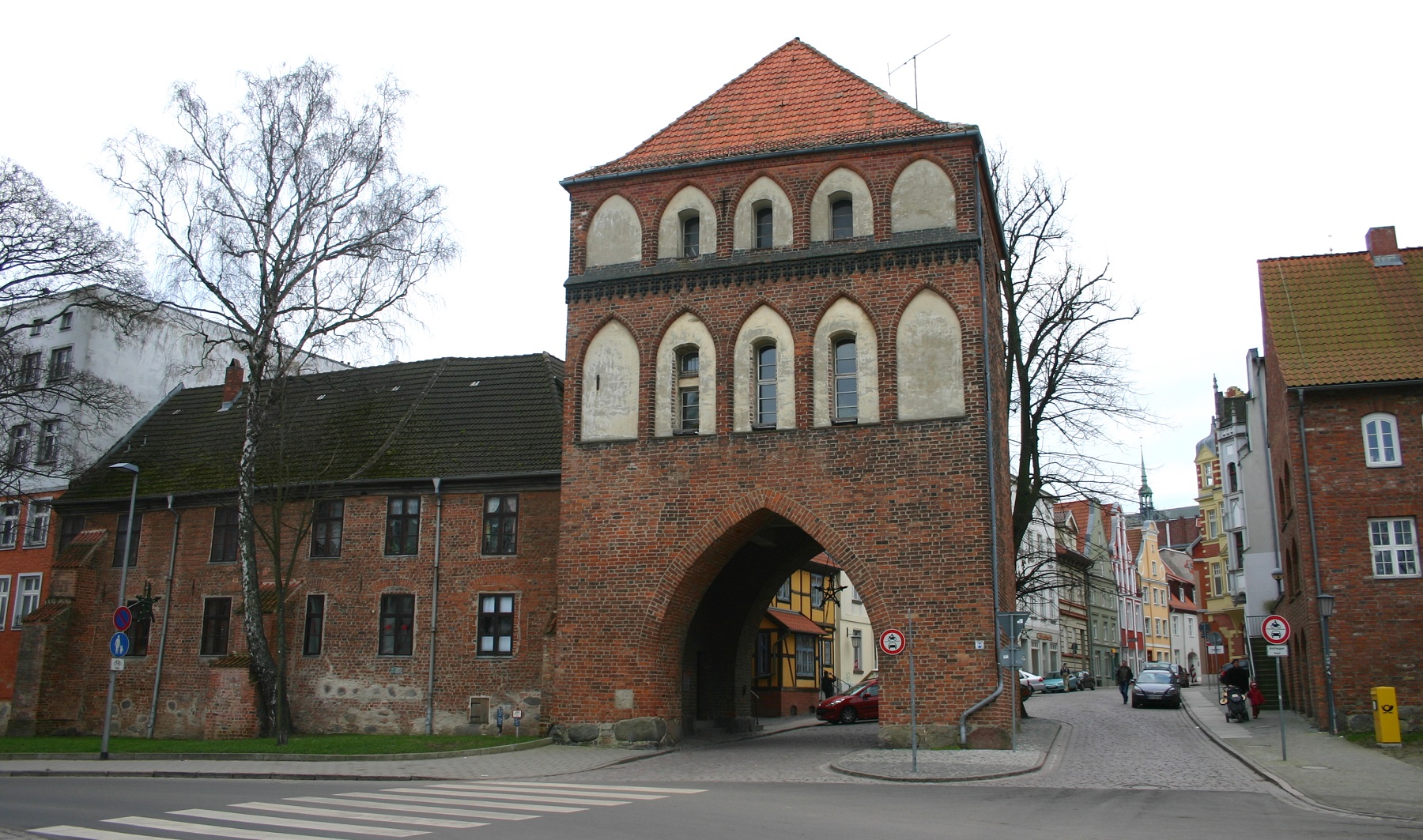
The city gate Kniepertor is one of the ten original gates that led through Stralsund’s city walls from the 14th century. In the city you can still see the remains of the city walls, and in addition to Kniepertor, Kütertor is also preserved to this day. In the 1960s, the gate was converted into a residence, and previously Stralsund’s trams ran through Kniepertor.
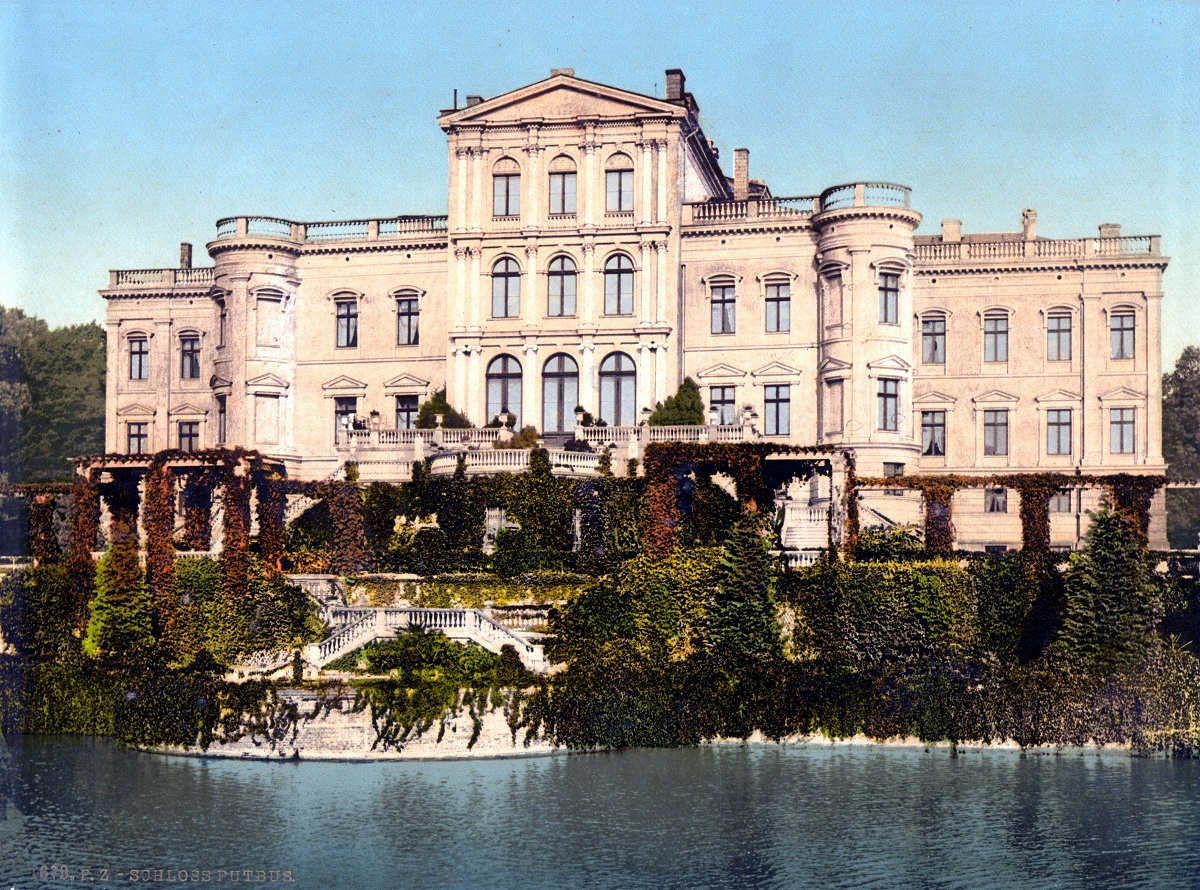
Putbus is one of the newer and very attractive towns on the island of Rügen. It is today architecturally interesting and it has the status of being a seaside resort as well. You can especially see the city’s fine architecture and elegant facilities in the town center.
The city of Binz is the largest and most famous seaside resort on the island of Rügen. Its history started as a fishing village in the 1300s, while already around 1830 it became a popular tourist resort due to its lovely beaches.
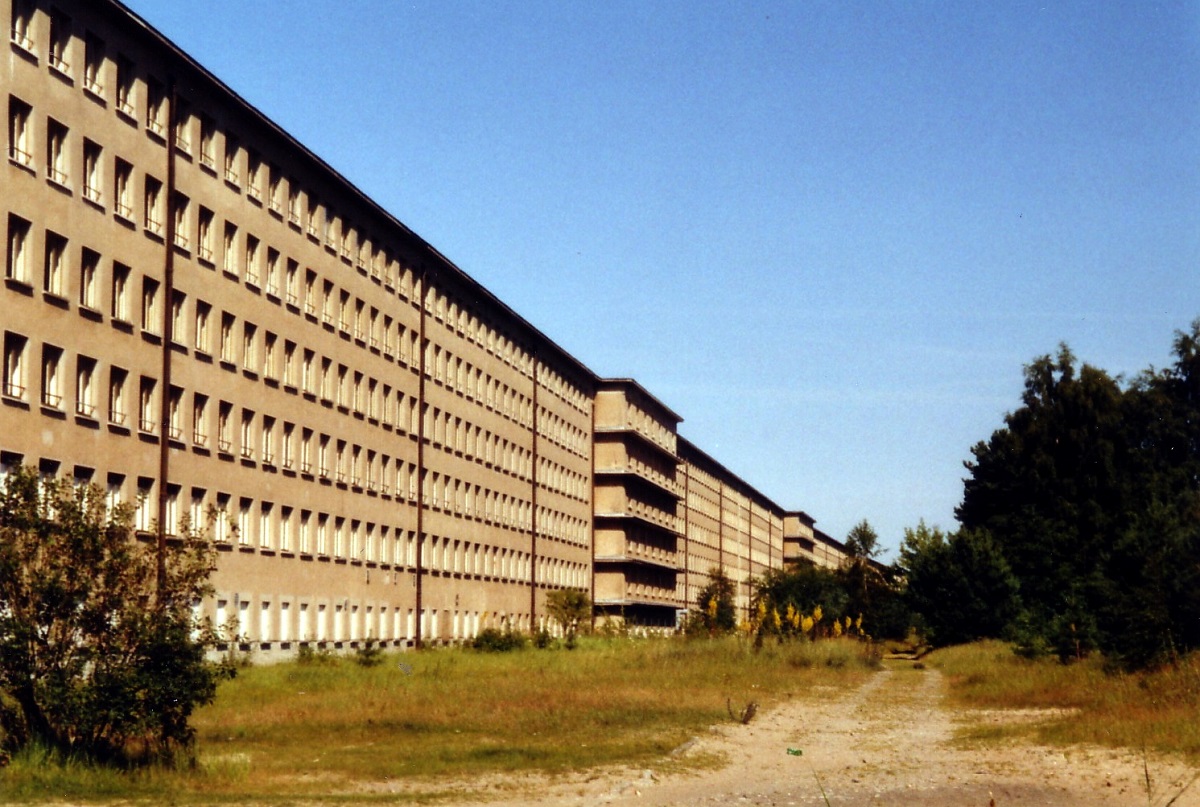
The colossus of Prora is the popular name for this building, which is one of the largest in the world. The colossus was built as a German holiday resort from 1936 to 1939 and consisted of several contiguous building sections along the coast.
The Hanseatic city of Greifswald on the small river Ryck is a nice city with everything that belongs to the character of a northern German city. Beautiful buildings, impressive churches, a central market square and a town hall with roots in the Hanseatic era are just some of the highlights.
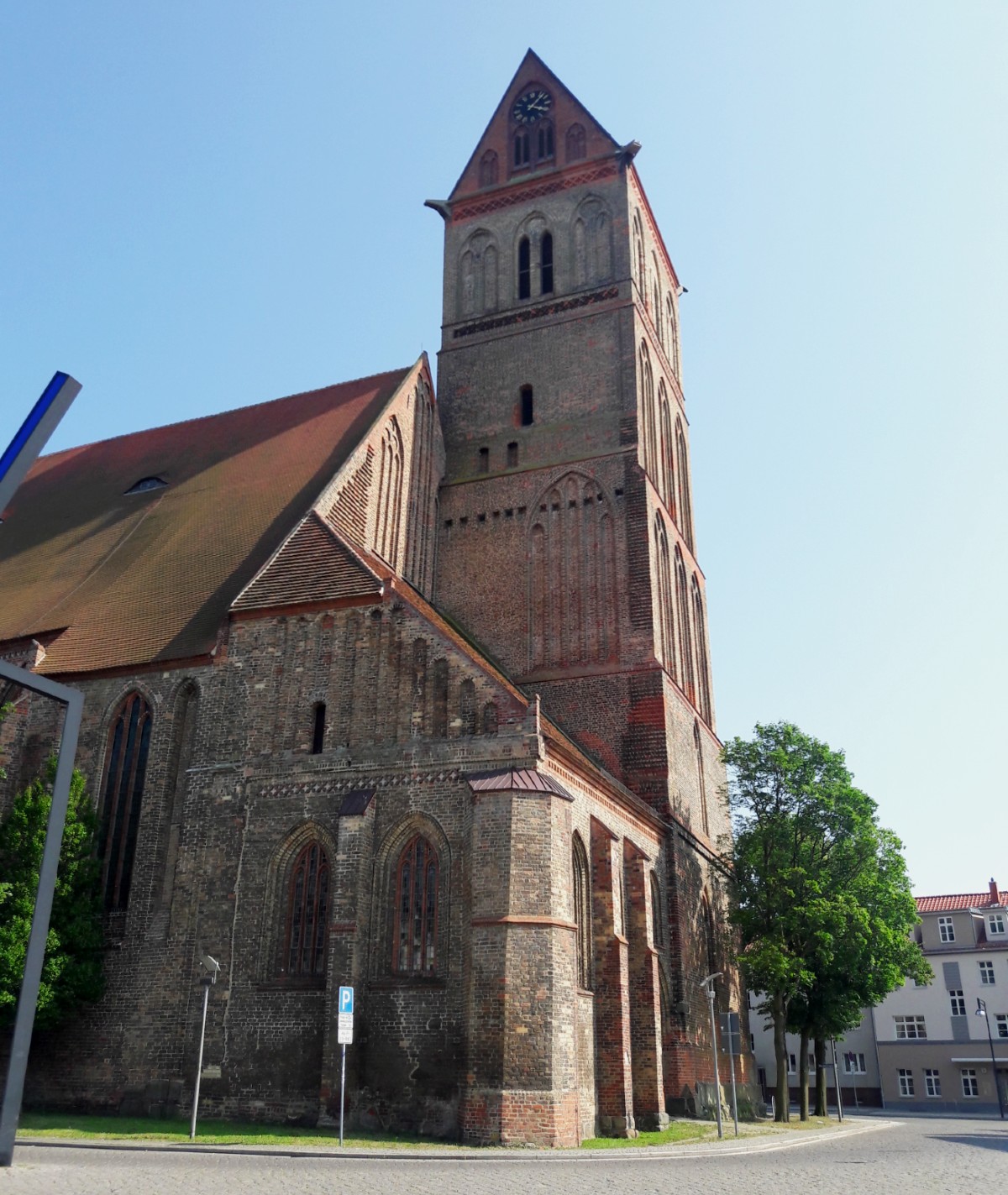
The town of Anklam is one of the smaller North German Hanseatic cities with an exciting history and fine sights, i.e. the central square and a couple of churches. Short walking distances characterize the small town and you can also visit an Otto Lilienthal museum.
The town of Demmin is one of the smaller Hanseatic cities that you can see in this area of Germany. Demmin offers an interesting history and fine sights with the elegant town hall building at the forefront.
Lindenallee 25
lindencenter.de
Gustower Straße 3
real.de
Grünhufer Bogen 11-14
strelapark.de
Ossenreyerstraße, Appolonienmarkt, Mönchstraße, Tribseer Damm
Deutsches Meeresmuseum
Katharinenberg 14-20
meeresmuseum.de
HanseDom
Grünhufer Bogen 18-20
hansedom.de
Ozenaneum
Hafenstraße 11
ozeaneum.de
Stralsund Tierpark
Barther Straße 1
stralsund.de
The history of the Stralsund area date back to the 9th century, when a Slavic settlement was established here. Within the city’s current name it was called Stralow, taken from a Slavic word for arrow. The dominion over the land changed in 1169 with the Danish king Valdemar the Great’s conquest of Rügen.
The development of the present city itself started in 1234, when Rügen’s prince Wizlaw I granted Stralow rights according to role models from Lübeck and Rostock. The city was then colonized by Germans in the otherwise West Slav-influenced area; many came from Westphalia, Lower Saxony and other western German regions.
In 1240, Prince Wizlaw named the city Stralesund, which later became Stralsund, which from the outset quickly developed into a thriving trading town on the Baltic Sea, and in the 1300s it was the leader after Lübeck in the northern German area.
The city center was from the beginning the marketplace, where large buildings saw the light of day; not least Stralsund City Hall and the mighty Saint Nicholas Church. The entire city comprised extensive buildings around the current two marketplaces, and from the end of the 13th century, a city wall encircled Stralsund and defended it against any attackers.
By 1249, however, the competitor Lübeck had attacked and burned Stralsund, which belonged to the Danish krone. The Lübeckers had overcome the Danish king and were thus also able to attack the merchant rise Stralsund.
In 1271 a major fire ravaged Stralsund, and many of the city’s wooden houses went up in flames. Subsequently, many more houses were built in stone. With Stralsund’s natural demarcation of water on all sides, there was plenty of room for development in the first period, and this alone provided further growth. In the 1200-1300s, the economy grew through not least trade, craftsmen and shipbuilding, but also the ever-increasing international trade cooperation.
In 1293, a mutual aid agreement was concluded between Stralsund, Greifswald, Lübeck, Rostock and Wismar. It was the start of the later successful Hanseatic League, where many more cities came into being.
Politically, after the dissolution of the Principality on Rügen with the death of Wizlaw III in 1325, Stralsund came to belong to Pomerania-Wolgast, one of the many historical dukes that this region has seen through time.
On May 24, 1370, the peace in Stralsund was concluded between the Danish king Valdemar Atterdag and the Hanseatic League. The peace ended the second war between Denmark and the Hanseatic cities; a war that had started with Denmark’s conquest of, among other things, the Hanseatic city of Visby on Gotland 1361. The result of the peace agreement was for Stralsund and the other Hanseatic cities that free trade continued to prevail.
After the peace in Stralsund, however, there was no long-term calm in the Baltic Sea area. At the beginning of the 1400s, the Hanseatic League became involved in the battle between Denmark and Holstein, and with Denmark’s introduction of the Øresund customs in the 1420s, taxes came on the trade.
The minor importance of the Hanseatic League from the 1400-1500s also weakened Stralsund’s influence and development. Instead of the lucrative trade, shipbuilding became the livelihood of the city.
During the Thirty Years’ War, from May to August 1628, Stralsund defended itself with the help of Denmark and Sweden against Albrecht von Wallenstein’s imperial troops. After the war, from 1648, Stralsund’s Swedish time followed in the region of Swedish Pomerania.
During the Great Nordic War 1700-1721, Swedish Forpomerania was invaded by Danish, Russian and Saxon troops, and with the siege of the city in 1715 the Swedes surrendered, and the King of Prussia, Friedrich Wilhelm, gave Stralsund to Denmark. With the Peace in Frederiksborg 1720, Stralsund became Swedish again, and this time the Swedish rule lasted until 1815.
At the beginning of the 19th century, Sweden’s King Gustav IV Adolf wanted to integrate Swedish Pomerania into the rest of Sweden, and with a pen stroke, Swedish law came into force from 1 January 1807. However, it was the time when France expanded under Napoleon, and in the summer of the same year came the matches to Stralsund.
The Swedish king was in town, as were the Prussian general Gebhard Leberecht von Blücher and thousands of English soldiers. On 6 August the first French attack came, and fourteen days later Stralsund was French. After the war, at the Vienna Congress on October 23, 1815, Stralsund and Pomerania became Prussian, and from 1818 Stralsund became the regional administrative center.
Throughout the 19th century, shipbuilding and shipping again became the major industry in Stralsund. Several hundred ships were registered in the city and they sailed to ports all over the world. As a result of the maritime school, a navigation school was established in 1854. However, the last decades of the century saw a dramatic decline in newbuilding of ships from the city’s yards.
The industrial era also made its mark on Stralsund, which came on the German rail network in 1863, it was with a side rail for the section between Berlin and Stettin. In 1873, the city’s fortresses were demolished and it brought with it a lot of new construction, and in 1900 the first electric tram line was inaugurated.
During World War II, large parts of Stralsund were destroyed by the Allied bombing of the city on October 6, 1944; among other things, over 35% of the city’s apartments had been hit. On May 1, 1945, Russian troops entered Stralsund, and the area became part of the GDR for the following decades.
During the GDR, Stralsund was greatly expanded with new residential areas, and the economy as a port city again started with a large shipbuilding industry. Politically, a breath from the Swedish past came with the meeting between DDR’s Erich Honecker and Sweden’s Prime Minister, Olof Palme, on June 29, 1984.
Following the German reunification in 1990, Stralsund’s Old Town has undergone a major renovation, and in 2002 UNESCO declared the site of world cultural heritage. Today, new museums have been opened, and Stralsund is the political, economic and tourist center in the northeast corner of Germany.
Overview of Stralsund
Stralsund’s rich history as a thriving Hanseatic city can be seen in many places in the beautiful Old North German town, where merchant buildings are located in the streets between the three large churches and other public buildings erected as symbols of the city’s ability and wealth during the Middle Ages.
The many small streets are evocative as of a bygone era, and one quickly discovers why the city center is on UNESCO’s list of world heritage sites. As you approach Stralsund, you immediately see the city’s great medieval churches; St. Nikolai, St. Marien and St. Nikolai. They are all sights and worth a visit, and in the streets around them it is just about exploring.
About the travel guide to Stralsund
Number of tours: 2 tours in the city + tours in the surrounding areas
Pages: 27
Published: 2019
Author: Stig Albeck
Publisher: Vamados.dk
Language: Danish
ISBN: 978-87-93491-25-0
About the travel guide The travel
guide to Stralsund gives you an overview of the sights and experiences in the German city. Read about top sights and other sights, and buy a travel guide with tour suggestions and descriptions of all the city’s major churches, monuments, mansions, museums, etc.
Stralsund is waiting for you, and at vamados.dk you can also find cheap flights and good deals on hotels for your trip. You just select your travel dates and then you get flight and accommodation suggestions in and around the city.
Read more about Stralsund and Germany
Buy the travel guide
Click the “Put in cart” button to buy the travel guide. You will then be taken to the payment, where you enter the purchase and payment information. After completing the wizard payment, you will immediately receive a receipt with a link to download your purchase. You can download the wizard immediately or use the download link in the email later.
Use the travel guide
When you buy the travel guide to Stralsund, you get the book online so you can have it on your mobile, tablet or computer – and of course you can choose to print it. Use the maps and tour suggestions and you will have a good and content-rich journey.
Old Market Square • Beautiful Churches • City Hall • Ozeaneum • Rügen
Overview of Stralsund
Stralsund’s rich history as a thriving Hanseatic city can be seen in many places in the beautiful Old North German town, where merchant buildings are located in the streets between the three large churches and other public buildings erected as symbols of the city’s ability and wealth during the Middle Ages.
The many small streets are evocative as of a bygone era, and one quickly discovers why the city center is on UNESCO’s list of world heritage sites. As you approach Stralsund, you immediately see the city’s great medieval churches; St. Nikolai, St. Marien and St. Nikolai. They are all sights and worth a visit, and in the streets around them it is just about exploring.
About the travel guide to Stralsund
Number of tours: 2 tours in the city + tours in the surrounding areas
Pages: 27
Published: 2019
Author: Stig Albeck
Publisher: Vamados.dk
Language: Danish
ISBN: 978-87-93491-25-0
About the travel guide The travel
guide to Stralsund gives you an overview of the sights and experiences in the German city. Read about top sights and other sights, and buy a travel guide with tour suggestions and descriptions of all the city’s major churches, monuments, mansions, museums, etc.
Stralsund is waiting for you, and at vamados.dk you can also find cheap flights and good deals on hotels for your trip. You just select your travel dates and then you get flight and accommodation suggestions in and around the city.
Read more about Stralsund and Germany
Buy the travel guide
Click the “Put in cart” button to buy the travel guide. You will then be taken to the payment, where you enter the purchase and payment information. After completing the wizard payment, you will immediately receive a receipt with a link to download your purchase. You can download the wizard immediately or use the download link in the email later.
Use the travel guide
When you buy the travel guide to Stralsund, you get the book online so you can have it on your mobile, tablet or computer – and of course you can choose to print it. Use the maps and tour suggestions and you will have a good and content-rich journey.

Alter Markt is Stralsund’s old market square, and it has been the city’s most important square for centuries. From here the city was ruled, and the first of Stralsund’s large churches was constructed here as the religious center. Today there is a nice atmosphere in the square, where you can see the building Commandantenhaus, which the Swedes built 1748-1751 for their local commander.
St Nicholas is the oldest of Stralsund’s three large, old parish churches. It was consecreated in 1276 and dedicated to Saint Nicholas, the patron saint of sailors who have always been an important one of the city’s development. The two towers of the church were destroyed in 1662, and in 1667 the south tower got a baroque top, while the north tower was left without reconstruction.

St. John’s Monastery was founded in 1254 by the Franciscans. It was one of the largest Franciscan monastic buildings along the southern Baltic coast. Today, the place stands as a ruin with worth seeing houses in the courtyard of the monastery.
Like many other cities in the Middle Ages, Stralsund has been surrounded by a defensive wall. It measured 3.1 km/1.9 mile and consisted of stone walls and 30 towers from the 1300s. The city’s defenses were later expanded by both Swedes and French during the Napoleonic era. The city wall was demolished in the latter half of the 19th century, but can still be seen in some places in the streets.

At the German Museum of the Seas you can experience many aspects of the world’s marine areas; eg marine biology, research fishing and environmental and protection efforts. It is one of Northern Germany’s largest science museums with interesting exhibitions.
The Museum House is part of the city’s cultural history museum, Kulturhistorisches Museum Stralsund. The house dates from the town’s flourishing period in the 1300s and was built in late Gothic style. The house’s museum is like a time travel through the house’s over 600-year history and with events that have happened through times.

The city gate Kniepertor is one of the ten original gates that led through Stralsund’s city walls from the 14th century. In the city you can still see the remains of the city walls, and in addition to Kniepertor, Kütertor is also preserved to this day. In the 1960s, the gate was converted into a residence, and previously Stralsund’s trams ran through Kniepertor.
Similar to Stralsund Travel Guide
There are no listings matching your search.
Reset